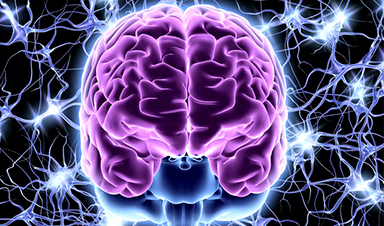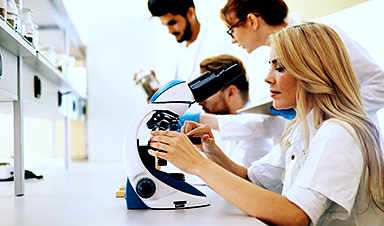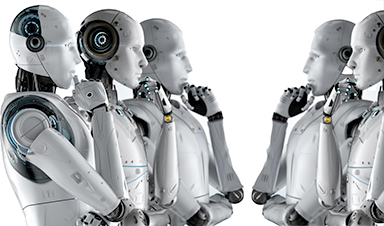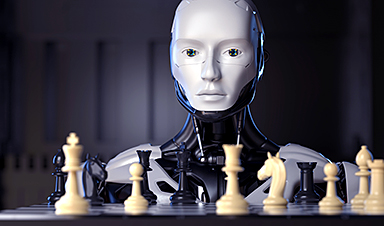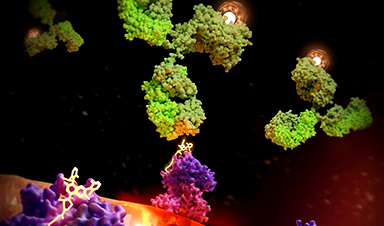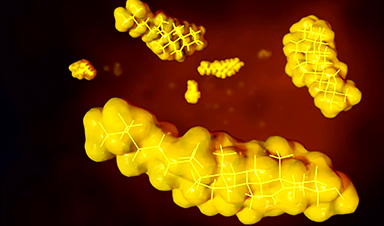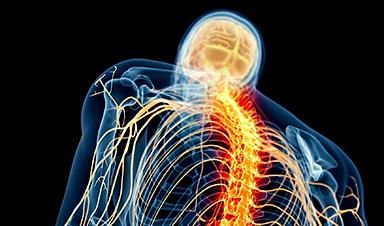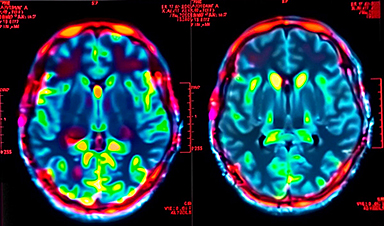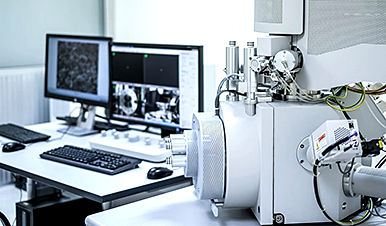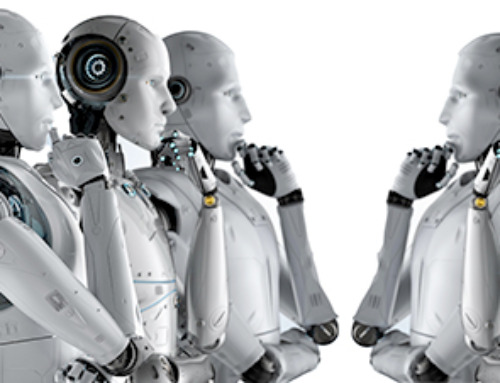Trauma can have a profound impact on an individual’s life. Recent research has shed light on how traumatic events can alter the physical structure of our brains. These changes are not due to physical injury but rather the brain’s ability to adapt and rewire itself after these experiences.
The ZVR Lab at the Del Monte Institute for Neuroscience at the University of Rochester, led by Assistant Professor Benjamin Suarez-Jimenez, Ph.D., is dedicated to understanding the mechanisms behind these changes and how the brain learns about its environment, predicts potential threats, and recognizes safety.
“We are learning more about how people exposed to trauma learn to distinguish between what is safe and what is not. Their brain is giving us insight into what might be going awry in specific mechanisms that are impacted by trauma exposure, especially when emotion is involved,” said Suarez-Jimenez, who began this work as a post-doctoral fellow in the lab of Yuval Neria, Ph.D., professor at Columbia University Irving Medical Center.
Along with the changes in the salience network, researchers found another difference – this one within the trauma-exposed resilient group. They found the brains of people exposed to trauma without psychopathologies were compensating for changes in their brain processes by engaging the executive control network – one of the dominant networks of the brain.
“Knowing what to look for in the brain when someone is exposed to trauma could significantly advance treatments,” said Suarez-Jimenez, a co-first author with Xi Zhu, Ph.D., Assistant Professor of Clinical Neurobiology at Columbia, of this paper. “In this case, we know where a change is happening in the brain and how some people can work around that change. It is a marker of resilience.”
Adding the element of emotion
The possibility of threat can change how someone exposed to trauma reacts – researchers found this is the case in people with post-traumatic stress disorder (PTSD), as described in a recent study in Depression & Anxiety. Suarez-Jimenez, his fellow co-authors, and senior author Neria found patients with PTSD can complete the same task as someone without exposure to trauma when no emotion is involved. However, when emotion invoked by a threat was added to a similar task, those with PTSD had more difficulty distinguishing between the differences.
The team used the same methods as the other experiment – different circle sizes with one size linked to a threat in the form of a shock. Using fMRI, researchers observed people with PTSD had less signaling between the hippocampus – an area of the brain responsible for emotion and memory – and the salience network – a mechanism used for learning and survival. They also detected less signaling between the amygdala (another area linked to emotion) and the default mode network (an area of the brain that activates when someone is not focused on the outside world). These findings reflect a person with PTSD’s inability to effectively distinguish differences between the circles.
“This tells us that patients with PTSD have issues discriminating only when there is an emotional component. In this case, aversive; we still need to confirm if this is true for other emotions like sadness, disgust, happiness, etc.,” said Suarez-Jimenez. “So, it might be that in the real-world emotions overload their cognitive ability to discriminate between safety, danger, or reward. It overgeneralizes towards danger.”
“Taken together, findings from both papers, coming out of an NIMH-funded study aiming to uncover neural and behavioral mechanisms of trauma, PTSD, and resilience, help to extend our knowledge about the effect of trauma on the brain,” said Neria, lead PI on this study. “PTSD is driven by remarkable dysfunction in brain areas vital to fear processing and response. My lab at Columbia and the Dr. Suarez-Jimenez lab at Rochester are committed to advancing neurobiological research that will serve the purpose of developing new and better treatments that can effectively target aberrant fear circuits.”
Suarez-Jimenez will continue exploring the brain mechanisms and the different emotions associated with them by using more real-life situations with the help of virtual reality in his lab. He wants to understand if these mechanisms and changes are specific to a threat and if they expand to context-related processes.
News
New mpox variant can spread rapidly across borders
International researchers, including from DTU National Food Institute, warn that the ongoing mpox outbreak in the Democratic Republic of the Congo (DRC) has the potential to spread across borders more rapidly. The mpox virus [...]
How far would you trust AI to make important decisions?
From tailored Netflix recommendations to personalized Facebook feeds, artificial intelligence (AI) adeptly serves content that matches our preferences and past behaviors. But while a restaurant tip or two is handy, how comfortable would you [...]
Can AI Really Think? Research Reveals Gaps in Logical Execution
While AI models can break down problems into structured steps, new research reveals they still fail at basic arithmetic and fact-checking—raising questions about their true reasoning abilities. Large Language Models (LLMs) have become indispensable [...]
Scientists Just Made Cancer Radiation Therapy Smarter, Safer, and More Precise
Scientists at UC San Francisco have developed a revolutionary cancer treatment that precisely targets tumors with radiation while sparing healthy tissues. By using a KRAS-targeting drug to mark cancer cells and attaching a radioactive [...]
Superbugs Are Losing to Science, Light, and a Little Spice
Texas A&M researchers have found that curcumin, when activated by light, can weaken antibiotic-resistant bacteria, restoring the effectiveness of conventional antibiotics. Curcumin: A Surprising Ally Against Superbugs In 2017, a woman admitted to a [...]
New Research Shatters the Perfect Pitch Myth
For decades, people believed absolute pitch was an exclusive ability granted only to those with the right genetics or early music training. But new research from the University of Surrey proves otherwise. It’s been [...]
Why Some Drinkers Suffer Devastating Liver Damage While Others Don’t
A study from Keck Medicine of USC found that heavy drinkers with diabetes, high blood pressure, or a large waistline are up to 2.4 times more likely to develop advanced liver disease. These conditions may amplify [...]
“Good” Cholesterol Could Be Bad for Your Eyes – New Study Raises Concerns
‘Good’ cholesterol may be linked to an increased risk of glaucoma in individuals over 55, while, paradoxically, ‘bad’ cholesterol may be associated with a lower risk. These findings challenge conventional beliefs about factors that [...]
Reawakening Dormant Nerve Cells: Groundbreaking Neurotechnology Restores Motor Function
A new electrical stimulation therapy for spinal muscle atrophy (SMA) has shown promise in reactivating motor neurons and improving movement. In a pilot clinical trial, three patients who received spinal cord stimulation for one [...]
AI’s Energy Crisis Solved? A Revolutionary Magnetic Chip Could Change Everything
AI is evolving at an incredible pace, but its growing energy demands pose a major challenge. Enter spintronic devices—new technology that mimics the brain’s efficiency by integrating memory and processing. Scientists in Japan have [...]
Nanotechnology for oil spill response and cleanup in coastal regions
(Nanowerk News) Cleaning up after a major oil spill is a long, expensive process, and the damage to a coastal region’s ecosystem can be significant. This is especially true for the world’s Arctic region, [...]
The Role of Nanotechnology in Space Exploration
Nanotechnology, which involves working with materials at the atomic or molecular level, is becoming increasingly important in space exploration. By improving strength, thermal stability, electrical conductivity, and radiation resistance, nanotechnology is helping create lighter, more [...]
New Study Challenges Beliefs About CBD in Pregnancy, Reveals Unexpected Risks
CBD is gaining popularity as a remedy for pregnancy symptoms like nausea and anxiety, but new research suggests it may not be as safe as many believe. A study from McMaster University found that [...]
Does COVID increase the risk of Alzheimer’s disease?
Scientists discover that even mild COVID-19 can alter brain proteins linked to Alzheimer’s disease, potentially increasing dementia risk—raising urgent public health concerns. A recent study published in the journal Nature Medicine investigated whether both mild and [...]
New MRI Study Reveals How Cannabis Alters Brain Activity and Weakens Memory
A massive new study sheds light on how cannabis affects the brain, particularly during cognitive tasks. Researchers analyzed over 1,000 young adults and found that both heavy lifetime use and recent cannabis consumption significantly reduced brain [...]
How to Assess Nanotoxicity: Key Methods and Protocols
With their high surface area and enhanced physicochemical properties, nanomaterials play a critical role in drug delivery, consumer products, and environmental technologies. However, their nanoscale dimensions enable interactions with cellular components in complex and [...]
